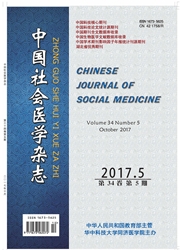

 中文摘要:
中文摘要:
目的探讨家庭经济状况对居民膳食营养素摄人及膳食结构的影响。方法采用多阶段分层与人口比例概率抽样方法,以家庭为抽样单位进行人户调查,用称重法收集居民连续3d调味品消费量,用24h膳食回顾法记录连续3d内个人食物摄入量,根据《中国食物成分表2004》计算每标准人日各类营养素的摄入量,运用Access建立数据库,采用SPSS12.0进行统计分析。结果共获得有效问卷1523份,有60.3%的家庭人均年收入低于20000元;随着家庭人均年收入的增加,每标准人日摄人的谷类呈递减趋势,而薯类、豆类、水果、奶类和蛋类的摄人量增加(P〈O.05),膳食纤维、维生素A、维生素E、钙、钾、铁和硒摄入量递增(P〈0.05),钠摄入量递减(P〈0.05),来源于谷类、碳水化合物的能量及来源于谷类的蛋白质比例逐渐减少,脂肪供能比增加。结论家庭经济状况与居民营养素摄入和膳食结构密切相关。
 英文摘要:
英文摘要:
Objectives To explore the effect of household economic status on nutrient intake and dietary structure. Methods multi-stage stratified and proportional probability sampling method was used to conduct household survey based on family unit. 3 days' spices intake weight was collected and 3 continuous days" food intake dose per person was reeoded. Average nutrient intake dose was calculated based on Chinese Food Composition of the year of 2004. The database was established by Access, and statistical analysis was comnducted using SPSS 12.0. Results Among the 1 523 valid questionnaires, the annual family income per head of 60.3% family was less than 20,000 yuan. With income increasing, average intake of cereals decreased, intake of potatoes, beans, fruits, milk and eggs increased (P~0.05), intake of dietary {iher, Vitamin A, Vitamin E, Calcium, Potassium, Iron and Selenium increased, in- take of sodium decreased, the ratio of energy from cereals and carbohydrates gradually decreased and so did protein from cereals, while energy produced by fat increased. Conclusions Household economic status was closely related to dietary intake and nutrition structure.
 同期刊论文项目
同期刊论文项目
 同项目期刊论文
同项目期刊论文
 期刊信息
期刊信息
